Published: March 17, 2023 | Last Updated on: March 17, 2023 | by Hema
Here are the Top Zinc Rich Foods for Babies and Kids, including both plant and animal sources, along with kid-friendly recipes and food ideas.
Jump To hide Health Benefits of Zinc for Babies and Kids Signs of a Zinc Deficiency How much zinc do you need? Top 10 Zinc Rich Foods for Babies and Kids 1. Chicken 2. Red meat 3. Lentils 4. Legumes 5. Nuts 6. Seeds 7. Eggs 8. Dairy products 9. Whole grains and millet 10. Vegetables Easy Ways to include Zinc in Kids’ Diets For babies aged 6 months and above: For babies aged 8 months and above: For kids aged 1 year and above: References: Buy Healthy Nutritious Baby, Toddler food made by our own Doctor Mom !If you ask someone what the most important mineral is for the human body, they’re most likely to mention iron, or copper, since these are the most talked about ones. However, there is another mineral that’s hiding in the shadows, but plays a crucial role in building immunity and maintaining several body functions – zinc!
We often think of Vitamin C when we think of immunity, but the truth is that zinc is just as important for it. Zinc is also used for the functionality of hundreds of enzymes, and is an essential mineral for nutrient absorption, repair, and more.

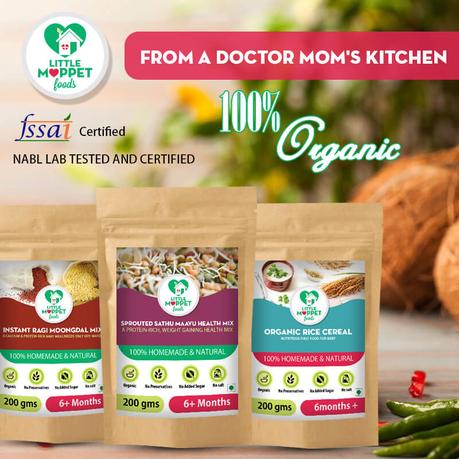
Zinc is also important for cell-building, which means it becomes particularly important during stages of growth, like childhood and pregnancy. Here is a look at some of the health benefits of zinc for babies and kids.
Health Benefits of Zinc for Babies and Kids

- Zinc activates the immunity cells in the body, called the T-lymphocytes, hence strengthening immune function
- It promotes the release of growth hormones, especially during adolescence
- It is important in synthesizing protein and breaking down carbohydrates
- Zinc promotes bone mineralization, which helps in the growth of healthy bones in children
- It improves eye health by activating Vitamin A and transferring it to the retina
- Zinc is known for its coagulation and cell-repair properties, which enable faster healing and recovery
- It can create a protective barrier on the skin and also repair broken skin tissue
- Zinc can protect skin from UV rays, which is why it’s often used in sunscreen
- It also has neurological benefits, improving children’s brain function, memory and focus
- Zinc is known for its anti-inflammatory properties, especially in inflammatory skin conditions
Signs of a Zinc Deficiency

Zinc deficiency is a rising public health problem, which doesn’t get the attention it deserves. The Harvard TH Chan School of Public Health conducted a study that estimates that India will have the largest number of zinc-deficient people in the world by 2050.
While the intake of other nutrients has increased over the years, surprisingly, the intake of zinc has actually decreased. One possible reason for this is the increased CO2 in the atmosphere, which decreases the zinc content in grains and cereals, which constitute a major portion of the Indian diet.
Here are some of the signs of a zinc deficiency:
- Poor appetite
- Loss of smell/taste
- Hair loss
- Discoloration or pigmentation on the skin
- Rashes and sores, especially around the mouth and fingernails
- Swelling of eyelids
- Difficulty concentrating
- Decreased brain function
- Feeling low or depressed
- Diarrhea
- Frequent infections and illnesses
- Slow wound healing
- Stunted growth
- Weight loss
- Iron-deficiency anemia
- Enlarged liver
Some people have a higher risk of zinc deficiency, such as:
- Young children
- Elderly people
- Women who are pregnant or breastfeeding
- People on a strict vegetarian or vegan diet
- Anyone who has trouble absorbing zinc due to a medical condition
Children with zinc deficiency are vulnerable to many illnesses and are also more likely to get seriously ill due to diarrhea and respiratory infections. Due to this, the WHO has put forth a new recommendation to include zinc along with ORS to treat any kind of diarrhoeal illness.
How much zinc do you need?

Here is the required daily allowance of zinc, according to age:
- 7 to 24 months – 3 mg
- 1 to 3 years – 5 mg
- 4 to 6 years – 7 mg
- 7 to 9 years – 8 mg
- 10 to 12 years – 9 mg
- 13 to 15 years – 11 mg
- 16 to 17 years – 12 mg
- Adults (male) – 12 mg
- Adults (female) – 10 mg
- Pregnant women – 12 mg
- Breastfeeding women – 12 mg
Zinc is a trace mineral, which means that it is required in small amounts in the body. However, some conditions can increase the requirement of zinc in the body, like those with Down syndrome, sickle cell anemia, thalassemia, or acrodermatitis enteropathica. Those with malabsorption conditions like Crohn’s disease, sprue, celiac disease, cystic fibrosis, and ulcerative colitis also need more zinc.
Our bodies cannot synthesize or store zinc, which means we need to ensure a constant intake of zinc to ensure we meet our daily requirements. The best way to do this is to include more zinc-rich foods in our diets, particularly for children.
Right after birth, babies usually have adequate levels of zinc in the body, which gradually decreases over the next six months, especially if exclusively breastfed. While breastfeeding, babies get zinc from breast milk, which is easily absorbed. However, after 6 months, it is important to start introducing zinc-rich foods in your baby’s diet. Here are the top zinc rich foods for babies and kids.
Top 10 Zinc Rich Foods for Babies and Kids
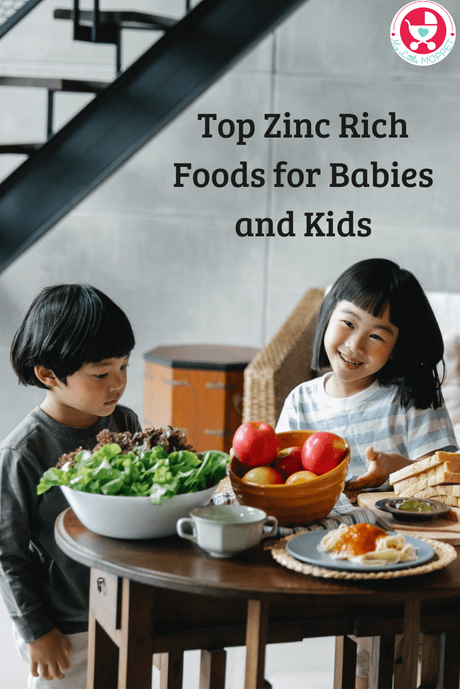
1. Chicken
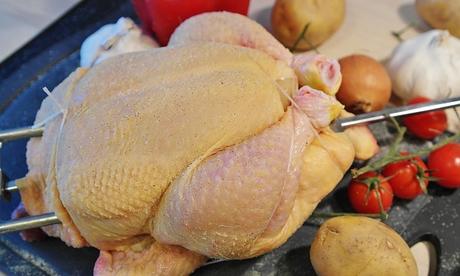
One of the easiest ways to get zinc is chicken, which is commonly available and affordable. 100 grams of chicken contains close to 1 mg of zinc, which makes it easy to reach a child’s daily requirement. Besides zinc, chicken also contains a good amount of Vitamins B6 and B12, as well as lean protein.
Try these chicken recipes for your little one:
- Chicken Stock (6 months+)
- Chicken Clear Soup (6 months+)
- Indian Chicken Puree (8 months+)
- Chicken Chilli (1 year+)
2. Red meat
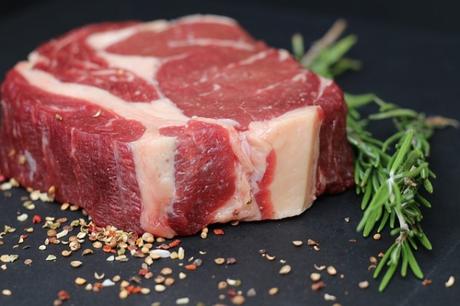
While it may not be as affordable or easy to prepare, red meat like mutton or lamb is also an excellent source of zinc, with a 100 g serving containing approximately 4.8 mg of zinc. It is also a great source of protein, fat, iron and B vitamins – all important nutrients for a growing child.
While eating too much red meat has been associated with health issues, consuming it in small quantities along with other healthy foods is safe.
3. Lentils
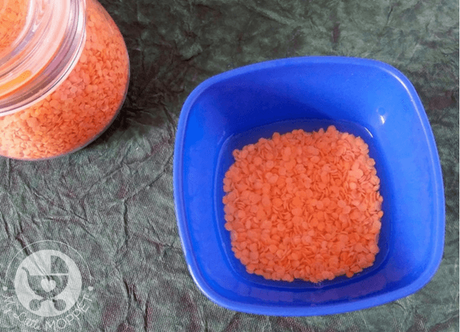
We are aware that lentils like dals are great sources of protein, but they are even better for zinc. Just 1 cup of lentils contains 2.52 mg of zinc. Since lentils are a part of many babies’ first foods, this is a great way to introduce zinc in the diet.
Try these lentils recipes for your little one:
- Dal ka Paani (6 months+)
- Carrot Moong Dal Soup (6 months+)
- Moong Dal Khichdi (6 months+)
- Sago Urad Dal Porridge (6 months+)
- Mango Dal Curry (8 months+)
- Pumpkin Mung Dal Porridge (8 months+)
- Soya Chana Dal Cutlets (1 year+)
- Moong Dal Cheela (1 year+)
- Moong Dal Sprouts Dosa (1 year+)
- Moong Dal Payasam (1 year+)
4. Legumes

Like lentils, legumes like chickpeas are also excellent plant sources of zinc, with 1 cup of chickpeas containing 1.66 mg of zinc. Legumes are a great way to add fiber to a child’s diet, and also keep them full for longer.
It is important to remember that legumes contain phytates, which are antinutrients that can hinder the absorption of nutrients like zinc. This means that zinc from legumes may not be as easily absorbed as zinc from animal sources. However, you can work around this problem by sprouting or soaking legumes and lentils before cooking them.
Try these legumes recipes for your little one:
- Beetroot Chickpea Puree (6 months+)
- Chickpea Spinach Puree (8 months+)
- Chickpea Rice (8 months+)
- Chickpea Spinach Pancakes (8 months+)
- Roasted Chickpeas Snack (1 year+)
- Rajma Sandwich (1 year+)
- Rajma Dosa (1 year+)
- Rajma Veggie Quesadillas (1 year+)
- Sprouted Moth Beans Frankie (1 year+)
5. Nuts
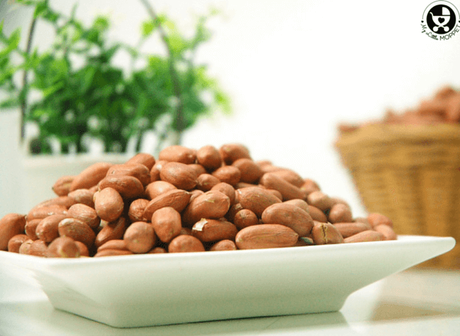
Nuts are a food that packs in a lot of nutrients in a small package, including zinc. All nuts provide a good amount of the mineral; 100 g of cashew nuts have a whopping 6 mg of zinc, while 100 g of almonds have 3 mg. Other nuts like peanuts, walnuts and pistachios are also high in zinc, as well as in healthy fats, fiber and protein.
Try these nuts recipes for your little one:
- Rice and Nuts Porridge (6 months+)
- Groundnut Poha Porridge (6 months+)
- Mixed Nuts Paratha (1 year+)
- Peanut Laddus (1 year+)
- Dates and Nuts Cooker Cake (1 year+)
- Dry Fruit Jaggery Energy Bars (1 year+)
- Caramelized Nuts Snack (3 years+)
6. Seeds
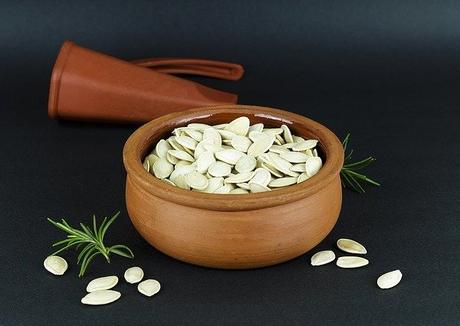
Along with nuts, seeds are also packed with a host of nutrients, of which one of the most prominent ones is zinc. The most important among these are pumpkin seeds, loaded with a hefty 10 mg of zinc in 100 g of seeds. Other seeds aren’t far behind; 100 g of flax seeds, chia seeds, and sunflower seeds have 4 mg, 5 mg, and 5 mg of zinc, respectively.
Try these seeds recipes for your little one:
- Ragi Crackers with Sesame Seeds (1 year+)
- Dates Chia Seeds and Apricot Laddu (1 year+)
- Dates Sesame Seeds Laddu (1 year+)
7. Eggs
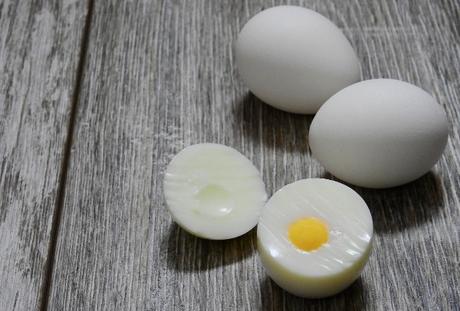
Eggs aren’t called a superfood for nothing; a single large egg contains 0.5 mg of zinc which is nearly one-sixth a small child’s daily requirement. What’s more, an egg is considered a complete protein, which means that they provide all the essential amino acids that the body can’t produce on its own. Overall, this is a good one to include in zinc rich foods for babies and kids.
Try these egg recipes for your little one:
- Egg Yolk Recipe (6 months+)
- Egg Yolk Scramble (6 months+)
- Egg Yolk Mash with Orange Juice (6 months+)
- Egg Yolk Vegetable Omelette (8 months+)
- Egg Yolk Quinoa Stir Fry (8 months+)
- Crunchy Egg Fingers (1 year+)
- Egg Drop Soup (1 year+)
- Egg Toast Cups (1 year+)
- Egg Salad (1 year+)
- Potato Egg Pancakes (1 year+)
8. Dairy products
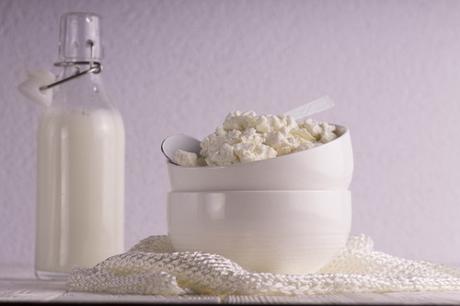
When you talk about zinc rich products for babies and kids, you can’t leave out milk and milk products. A cup of milk contains approximately 1 mg of zinc, while this goes up when you move on to other dairy products. One cup of yogurt, cheese or paneer contains 1.4 mg of zinc. The best part is that the zinc in dairy products is bioavailable, which means the body absorbs it readily.
Try these yogurt recipes for your little one:
- Fruit Yogurt (6 months+)
- Pureed Kiwi Yogurt (7 months+)
- Yogurt Fruit Parfait (1 year+)
- Gopalkala (1 year+)
Try these paneer recipes for your little one:
- Cauliflower Paneer Puree (8 months+)
- Paneer Vegetable Puree (8 months+)
- Jeera Paneer (8 months+)
- Paneer Pepper Curry (1 year+)
- Paneer Cutlet (1 year+)
9. Whole grains and millet
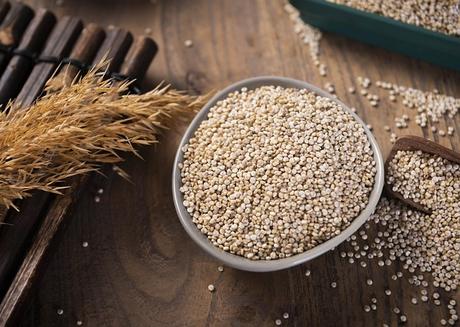
We often think of whole grains in terms of adding fiber to our diet, but they’re also good zinc rich foods for babies and kids. Millets are the superior ‘grain’ when it comes to zinc, with 100 g containing over 3.5 mg of zinc. Oatmeal follows soon after, with 1 cup containing nearly 3 mg of zinc. A cup of cooked brown rice has 1.38 mg of zinc, while a cup of cooked quinoa has 1.85 mg. In India, studies have found that places that have replaced millet with refined grains have noted a steep rise in cases of zinc deficiency.
Try these whole-grain recipes for your little one:
- Broken Wheat Apple Halwa (6 months+)
- Quinoa Apple Porridge (6 months+)
- Curd Oats Khichdi (6 months+)
- Broken Wheat Pumpkin Porridge (8 months+)
- Curd Quinoa (8 months+)
- Cheesy Wheat Noodles (1 year+)
- Mini Wheat Cookies (1 year+)
- Quinoa Vegetable Upma (1 year+)
- Oats Egg Custard (1 year+)
10. Vegetables
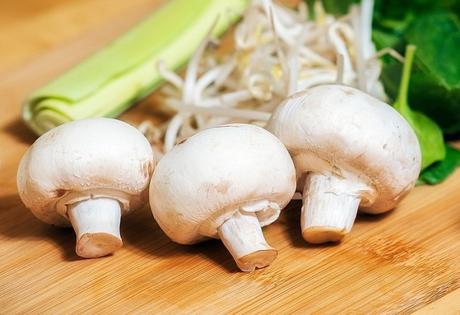
While not a lot, vegetables do contain some amount of zinc which eventually adds up to reach the RDA for a child. The vegetables to eat for zinc include potatoes, spinach, mushrooms, peas, broccoli and kale. Besides zinc, these vegetables also provide a host of nutrients that are essential for kids’ healthy growth and development.
Try these vegetable recipes for your little one:
- Green Peas Potato Puree (6 months+)
- Broccoli Butter Puree (8 months+)
- Sweet Potato Spinach Puree (8 months+)
- Spinach Khichdi (8 months+)
- Creamy Spinach Soup (1 year+)
- Spinach Oat Pancakes (1 year+)
- Broccoli Mushroom Soup (1 year+)
- Mushroom Tikka (1 year+)
Easy Ways to include Zinc in Kids’ Diets

Knowing what the zinc rich foods for babies and kids are is one thing – the next is getting them to actually eat these foods! We know that children of this age can be quite tricky and fussy eating leads to a loss of nutrients and ensuing deficiencies. To fix that, we’ve got a few shortcuts to ensure your child gets multiple zinc-rich foods in one go.
For babies aged 6 months and above:
Sprouted Sathumaavu Powder – It has whole grains (Wheat, Ragi, Jowar), lentils (Roasted Gram, Green Gram, Black Gram, Corn, Sago, Chickpeas, Horse Gram, Cowpeas) and nuts (Cashew nuts, pistachios and almonds). What’s more, the grains are sprouted, so the phytate problem is taken care of and all the zinc can be absorbed.
For babies aged 8 months and above:
Millet Sathumaavu Mix – It has whole grains (Wheat dalia, Sago, Corn, Ragi, Bajra, Jowar, Foxtail Millet, Barnyard Millet, Kodo Millet), lentils (Black Urad Dal, Green Gram, Roasted Gram, Moong Dal, Masoor dal, Horse gram), nuts (Almonds, Cashewnuts, Pistachios) and Sesame Seeds
Dry Fruits Powder – It is packed with nuts and only nuts, including Almonds, Cashew Nuts and Pistachios
Banana Nutrimix – It has whole grains (wheat dalia, rice, corn), lentils (Black Urad Dal, Green Gram, Roasted Gram, Masoor Dal, Sago, Horsegram) and nuts (Almonds, Cashew)
Multigrain Drink Powder – It is made of whole grains (Bajra, Finger Millet, Jowar, Foxtail Millet, Barnyard Millet, Kodo Millet, Corn), nuts (Almond, Cashew, Pistachios) and Sesame Seeds
For kids aged 1 year and above:
Mixed Nuts Powder – It contains all the goodness of nuts like Cashew nuts, Pistachios, Almonds and Walnuts
Millet and Nuts Muffins Mix – The mix contains whole grains (Whole wheat flour, Bajra, Ragi, Jowar, Barnyard millet, Foxtail millet, Corn) and nuts (Peanuts, Almonds, Cashew nuts)
Seed Delight Bar – The bar is packed with oats as whole grain as well as seeds including pumpkin, sunflower and sesame seeds
Masala Milk Magic – This mix contains nuts (Almonds, Cashews, Pistachios) and pumpkin seeds
Immunobooster Drink Mix – It has whole grains(Oats, Wheat Dalia), nuts (almonds, cashew nuts) and seeds (Flax seeds, Pumpkin seeds, Sunflower seeds, Sesame seeds)

Zinc is easily available as a supplement, and today there are supplements targeted toward kids as well as adults. These supplements are available as pills or tablets and often leave an unpleasant taste in the mouth. Please remember that zinc supplements should only be taken under medical supervision – never give them to your child without your doctor’s advice.
Too much zinc can lead to zinc toxicity, which occurs mostly due to an overuse of zinc supplements. It is almost impossible to get zinc toxicity from diet alone. Cooking in zinc-plated cookware may also induce toxicity. Here are the common signs of an overdose of zinc:
- Poor appetite
- Nausea and vomiting
- Diarrhea
- Stomach pain
- Drowsiness
- Headache
If you notice any of these signs you should rush to the doctor right away.
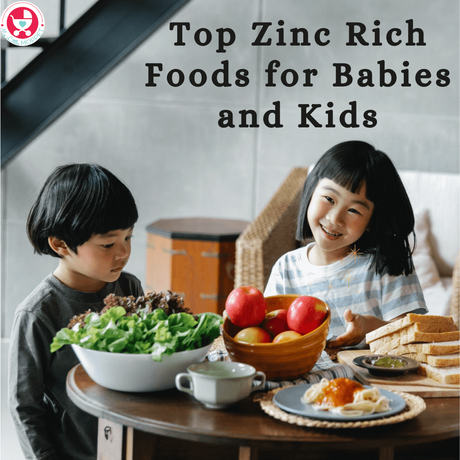
References:
- Centers for Disease Control and Prevention (CDC)
- Stanford Medicine
- Food Safety and Standards Authority of India (FSSAI)
- World Health Organization (WHO)
- Harvard School of Public Health
- International Nutrition Foundation Journal
Buy Healthy Nutritious Baby, Toddler food made by our own Doctor Mom !
Shop now!You may also like
- Top 10 Iron Rich foods for Kids with Recipes
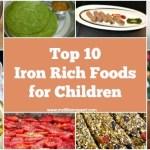
- Top 10 Vitamin C Foods for Babies and Kids that You should…

- Top 12 Vitamin A Foods for Babies and Kids

- Top 5 Vitamin D Foods for Babies and Kids
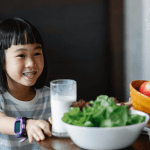
- Top 20 Super Healthy Weight Gain Foods for Babies and Kids
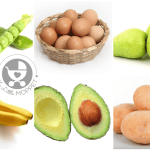
- Free List of weight gaining foods for babies and kids
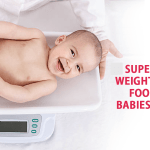
Filed Under: Nutrition Tagged With: important nutrients for children, nutrients, nutrition, top 7 essential nutrients your child may be missing, zinc
